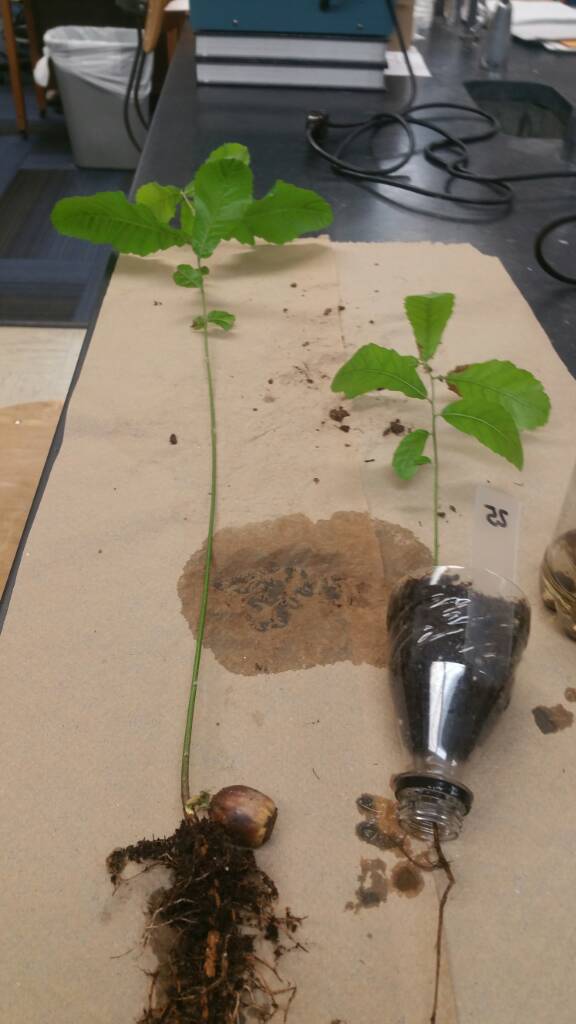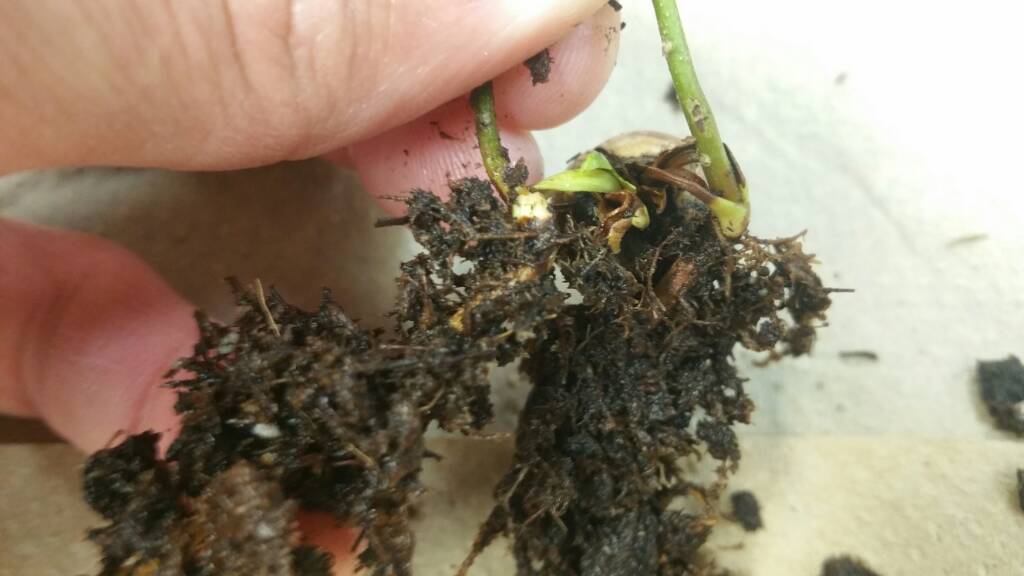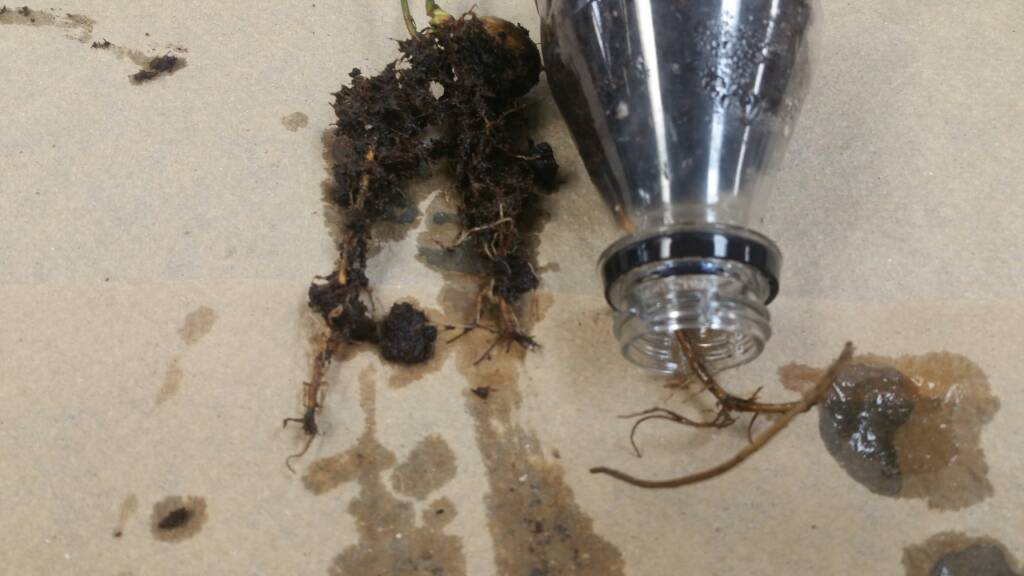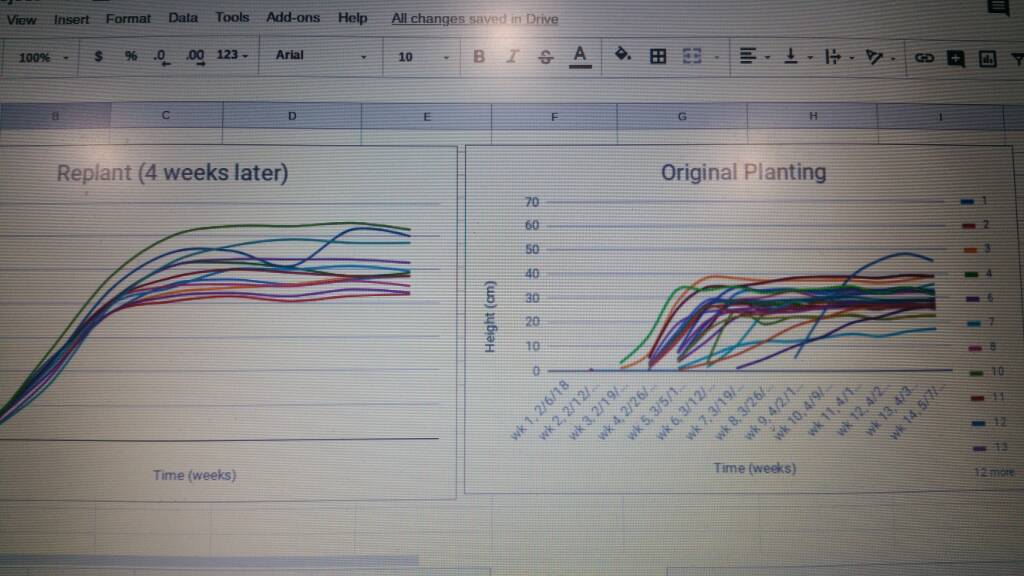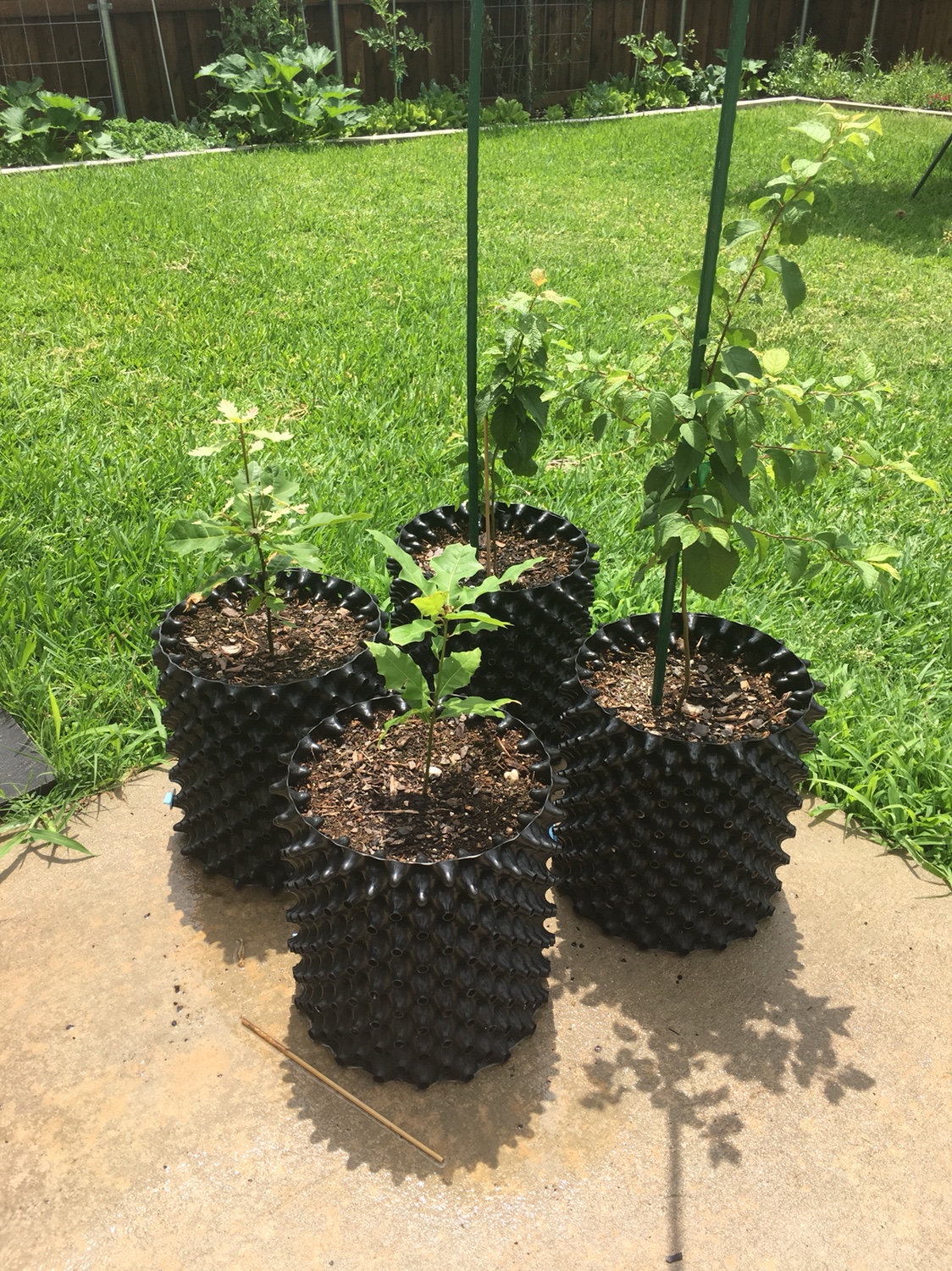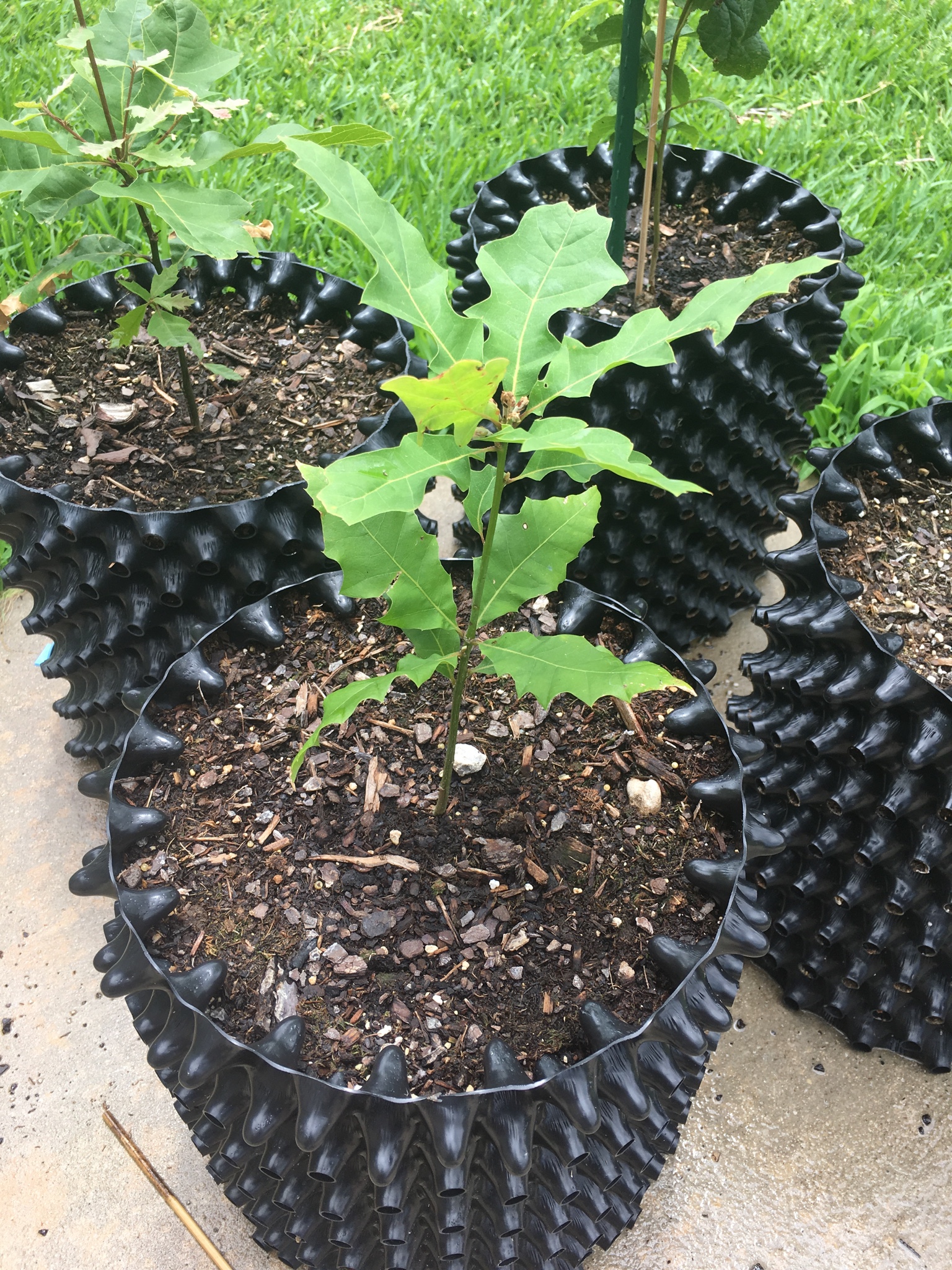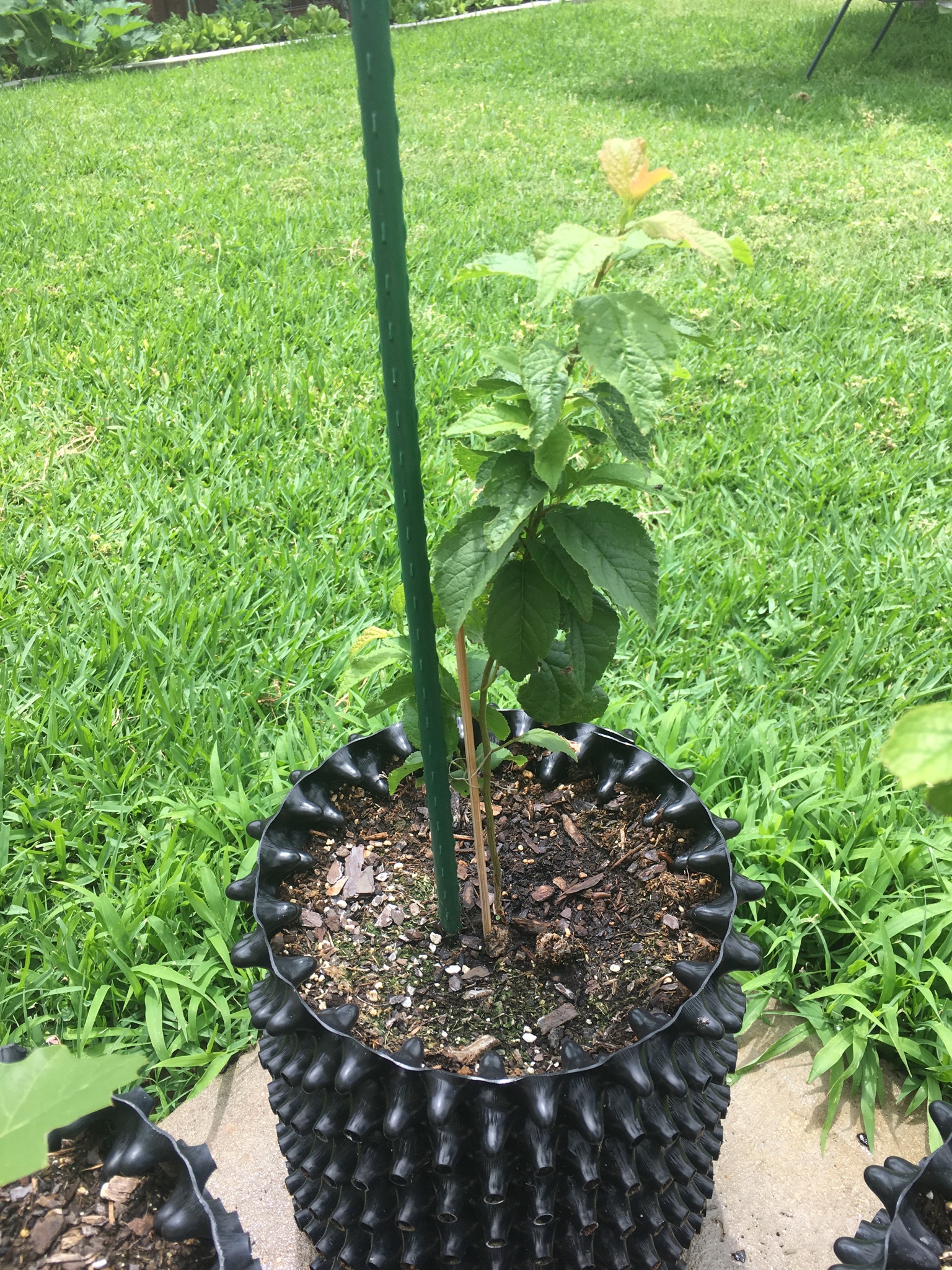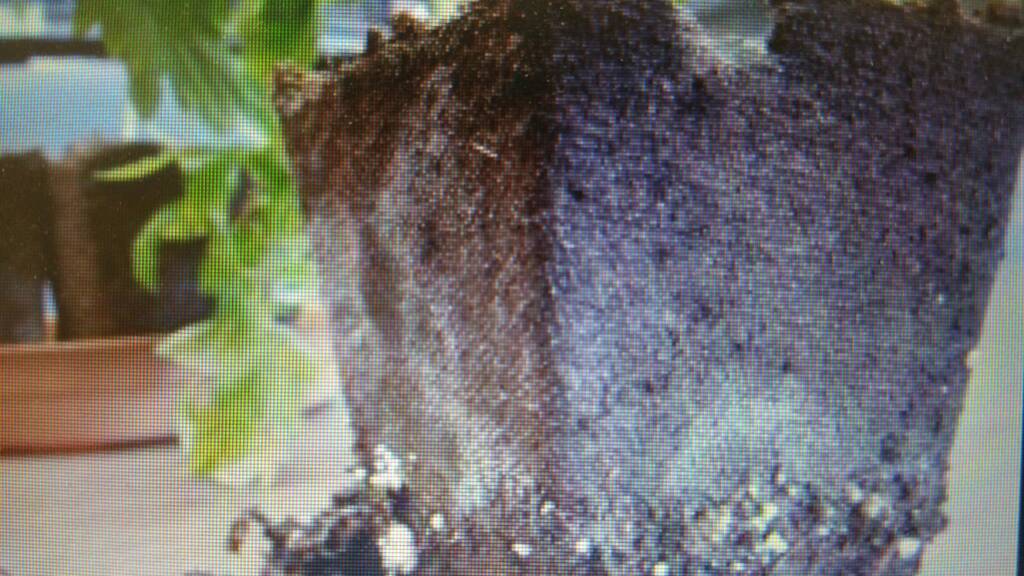Yep, the issue with starting them in larger pots is the 4" rule. Whitcomb wrote some papers that documents some studies years ago. They found that when you prune a root, most of the upstream branching occurs in the last 4" of the root behind the prune. So, when you start a nut in a large root pruning pot, they grow much slower. It is similar to direct seeding as much of the energy from the nut is used to develop that tap root. When it gets to the bottom of a properly designed air pruning pot, it hits the air and is pruned. Now, branching begins, but mostly in that last 4" of the tap root. So, much of the volume of the pot contains nothing but mix. Instead of energy from the nut going to increasing that early branching and accelerated top growth, it goes into that tap root. When you start them in 18s, they are pruned at about 4". The nut still has lots of energy to supply at that point. By the time the nut is pretty much exhausted as a source of energy, the root system has gone a long way toward filling the 18 and those many tiny root tips are very efficient at extracting nutrients. That is why when you use root pruning containers you need a system of containers if you want to maximize growth.
That doesn't mean you get no benefit from the way you are doing it. You still avoid the issue of circling or j-hooking roots. You method may actually work better in some more arid environments because while the tree has fewer tiny root tips for gathering nutrition, if you plant early (from one of these larger containers) the tiny root tips that is does have are deeper than if you tried to plant directly from an 18 or 1 gal RB2. This may work better in places where the top foot of soil dries out and no supplemental water is provided.
If you want to maximize growth, you need that early pruning stage.
As for fertilizer, I'm very careful with young seedlings. I typically use Osmocote+ which is a slow release. I sprinkle it on my 18s shortly after they emerge. This makes it available about the time the second flush of leaves begin. I then mix in a couple caps of Osmocote+ into the mix when I transplant. I typically transplant to 1 gal RB2s and then to 3 gal RB2s during the summer. Each time I transplant I'll add Osmocote+. For trees in their second season, I use regular fertilizer. I typically use 10-10-10 simply because I have it available from other projects. I don't actually apply it directly to the trees. I dissolve it in the tubs of water I used. During dry periods when rain water is precious, I like to dunk my RB2s in a tub of rain water rather than top watering them. It makes for a very efficient use of water. I build a draining table. It is a rack that I put the RB2 on after dunking it. Water that drains out is collected and reused for watering.
I also agree that some trees grow much faster than others. Chestnuts are very fast. I've had trees over 6' tall with 5/8" or more caliper after a single growing season. DCOs and pawpaws are extremely slow by comparison.
Thanks,
Jack
